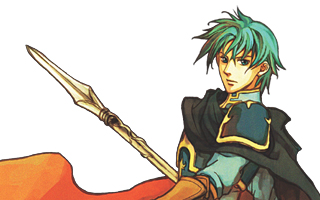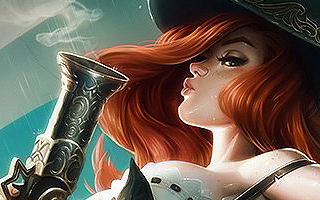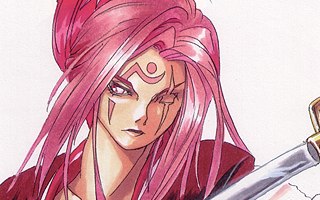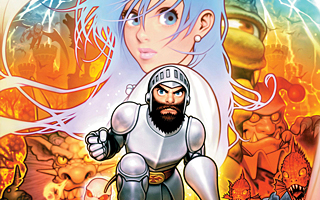Game Changers of the 1990s
Top 10 Most Important Video Games of the 1990s!
We’ve already examined the 1970s and the 1980s, so now it’s time to look at the most important games of the 1990s! The ’90s was an exciting time to be a video game fan. The 8-bit NES was dominating the market when we entered the decade, and we were already seeing the first 64-bit consoles by 1996. Entirely new genres were created during the decade, and fundamental changes were being made with respect to how games were played. The industry began implementing features like analog controls and force feedback, and new storage formats were being adopted. The ’90s brought us the 16-bit wars, the emergence of Sony as the market leader, the rise of optical media, the proliferation of 3D games, and exponential growth in the online gaming space. To put it another way, the ’90s was a decade of change. The scope of these changes make it difficult to create a definitive list of best games, so we’re simply counting down the games that helped transform the industry.
10
Dune II: The Building of a Dynasty
1992

Turn-based strategy games were fairly common in the 1980s, but real-time strategy games didn’t show up until much later. Games like Utopia and Herzog Zwei helped lay the framework for the genre, but Dune II established the format that would be used for years to come. In fact, the term “real-time strategy” was first used for the game’s marketing campaign. The game is loosely based on David Lynch’s adaptation of Frank Herbert’s iconic novel, and it puts players in command of one of three interplanetary factions. Early missions task players with building bases, harvesting spice, and defeating intruders, but the objectives become more complex as the game progresses. (Watch out for those sandworms!) Dune II had many elements that would define the modern-day RTS, including a “fog of war” dynamic, context-sensitive mouse cursors, construction dependencies, and an economic model of resource-gathering and base-building. The mechanisms were not necessarily unique to Dune II, but the game achieved a perfect balance between usability and innovation. Dune II was used as the template for Westwood Studio’s next game (Command & Conquer), and its defining influence can also be seen in games like Warcraft, StarCraft, and Total Annihilation.
9
EverQuest
1999

Massively multiplayer online role-playing games date back to the multi-user dungeon crawlers of the 1970s, but the genre didn’t take off until after the Internet reached critical mass. Ultima Online was a watershed moment for MMORPGs in 1997, but there are several reasons why EverQuest is being recognized instead. Firstly, the game’s 3D graphics were more immersive than Ultima Online‘s 2D sprites, and the high fantasy world of Norrath appealed to a larger audience. On a less superficial level, the game introduced mechanics that defined modern MMORGs as we know them. EverQuest put a strong emphasis on social interaction, and the game forced you to team up with other players in order to kill tough monsters. This was often the only way to build your character, and the unforgiving difficulty encouraged you to forge new relationships and meet new people. (You were required to grind for items and equipment, but the real reward was the friends you made along the way!) The game exceeded early sales expectations, and it outstripped Ultima Online‘s subscription count within its first year. The game is still a viable commercial entity two decades after its release, in fact, and a staggering 25 expansion packs have been released thus far. Rest assured, the success of EverQuest extends beyond its subscription base or its longevity. The game laid the foundation for juggernauts like World of Warcraft, and it’s almost impossible to imagine what the MMORPG landscape would look like had EverQuest never been created.
8
The Legend of Zelda: Ocarina of Time
1998

The Legend of Zelda: Ocarina of Time is considered by many to be one of the greatest games of all-time. It’s easy to understand why, and lot can be said about the brilliant dungeon designs, the epic boss battles, the creative weapons, the amazing music, the memorable characters, and the dramatic story. The reason why it’s being mentioned on this list, however, is because of its innovative play mechanics. With Super Mario 64, Nintendo created a framework for how character movement and camera control should work in a 3D space. An adventure game like Ocarina of Time required more precision. With that in mind, Nintendo introduced a concept called “Z-targeting” that allowed players to lock onto enemies and other objects. When an enemy is targeted in this fashion, Link remains fixated on them regardless of where the camera is positioned. This ultimately allows Link to wield his sword freely, parry with his shield, evade attacks, or perform advanced techniques like backflips without losing focus of his target. Put another way, Z-targeted allowed players to perform complex maneuvers without having to worry about the camera at all. This mechanism was a necessary step in the evolution of 3D games. Ocaria of Time wasn’t the first game with lock-on mechanics, but the Z-targeting approach was more intuitive and influential than any of its contemporaries.
7
Final Fantasy VII
1997

There’s a lot to love about the seventh entry in the Final Fantasy series. The story is dramatic, the characters are endearing, and the gameplay mechanics are easy to understand without feeling overly simplistic. The game also has one of the best soundtracks of its generation, and the cinematic cutscenes were revolutionary. I was blown away by how the CG cutscenes would seamlessly blend into the pre-rendered backdrops, and the dynamic camera angles made the game feel like a Hollywood blockbuster. Final Fantasy VII racked up Game of the Year awards from numerous publications, but the reason it’s being mentioned on this list has more to do with its commercial impact. Console role-playing games had always been seen as niche titles in the West, but Final Fantasy VII rose to the top of the sales charts and introduced a new generation to the series. It helped an entire genre gain mass-market appeal outside of Japan, and it shaped the identity of the PlayStation brand in the process. On a related note, Final Fantasy VII played an important role in the Console WarsTM. Square’s decision to embrace CD-ROM technology instead of the cartridge-based Nintendo 64 tipped the scales in PlayStation’s favor and cemented Sony as the industry leader. I’ve always been partial to its predecessor, but Final Fantasy VII is arguably the most important JRPG of all time.
6
Mortal Kombat
1992

Fighting games were everywhere in the 1990s, and publishers were hoping to tap into the market that Street Fighter II had created. While many of these games were uninspired and formulaic, Mortal Kombat brought many new ideas to the table. Digitized characters were still a novel concept in 1992, and Mortal Kombat made you feel like you were playing a Bruce Lee movie. The game also featured a secret character, unique boss battles, and a ton of hidden Easter eggs. The game was most notable for its depictions of extreme violence, however, and the gory finishing moves made the game stand out from other arcade titles of the era. This violence was a source of major controversy, and a moral panic arose from sanctimonious politicians and self-righteous watchdog groups. Congressional hearings on video game violence and the corruption of society were held through 1992 and 1993, and the news media did what they could to fuel the outrage. In response to the public outcry, the Entertainment Software Rating Board (ESRB) was created. In essence, the industry had adopted a form of self-censorship to shield themselves from the threat of government regulation. Similar organizations began popping up all over the world, and creative works are now beholden to the whims of regulatory boards. You can’t by a game today without seeing an age rating plastered on the front of it. A rating system was an inevitability, but Mortal Kombat was the catalyst that kicked things into gear.
5
StarCraft
1998

We’ve already discussed how Dune II created the framework for the modern-day RTS, so it feels like I’m treading on familiar territory by putting StarCraft on this list along side it. Although StarCraft raised the bar for the genre in many ways, it didn’t necessarily deviate from the status quo in a meaningful way. The game followed most of the conventions established by Dune II, after all, and players were still tasked with gathering resources, building armies, and crushing their opposition. The reason why StarCraft is being mentioned on this list is entirely due to its cultural influence and its impact on the competitive gaming community. The game amassed an especially large following in South Korea, and its popularity even led to the creation of a government-sponsored eSports association. Large tournaments were held, competitions were regularly televised, and professional gamers were treated as legitimate celebrities. In recent years, stadiums have been built specifically to facilitate eSports events! Millions of people tune in to watch competitions every year, and the prize pools have grown dramatically. The rise of online streaming platforms like Twitch has helped foster the growth of competitive gaming around the globe, and over 400 million people are expected to watch some form of eSports in 2020. Competition has been a key component in the gaming world for many decades, but StarCraft underlined the potential for gaming to be treated like a spectator sport.
4
Pokémon Red & Blue
1996

On the surface, the first Pokémon games looked like any typical JRPG. They had turn-based battles, a clunky inventory system, and a story focused around a youthful protagonist who was stepping out into the world for the first time. It was standard fare for the most part, but Pokémon offered a lot in the name of innovation. Most JRPGs required you to defeat your opponents outright, but Pokémon encouraged players to weaken the wild Pokémon and eventually capture them. After a Pokémon was captured, players could use them to battle other Pokémon. Each Pokémon had its own strengths and weaknesses, so it was beneficial to catch as many as possible. Pokémon could level up, learn new moves, and eventually evolve into entirely new Pokémon. There were over 150 Pokémon to catch, but not all of them could be found in any single version of the game. Nintendo released separate Red and Blue versions of the game, and certain Pokémon were exclusive to each version. If you wanted to catch ’em all, you had to link up with another player and initiate a Pokémon trade. Players had the option of battling against other players too, and this gave you an incentive to keep playing even after finishing the main story. In order to experience the game’s true potential, players had to socialize with other people. This social element is ultimately what made Pokémon a global phenomenon. Pokémon breathed new life into the Game Boy after its release, but its success could not be tied to a single platform or medium. Some critics insisted that Pokémon was merely a fad, but the series is still going strong decades after its initial release and it has morphed into one of the highest-grossing media franchises of all time.
3
Street Fighter II
1991

By the early ’90s, it was clear that the golden age of arcade games was over. The NES was an unprecedented success and the newer 16-bit consoles were flying off the shelves, so it was no longer necessary to visit an arcade to get your gaming fix. Street Fighter II changed everything, seemingly over night. The concept of a head-to-head fighting game was nothing new, and Street Fighter II followed many of the conventions established by its 1987 predecessor. The gameplay was more refined, however, and the controls were more responsive. The ability to link moves together to form combo attacks gave the game a level of depth that was not seen in other fighting games. Street Fighter II featured eight playable characters (and four additional bosses), and each one had their own distinct fighting style. This gave arcade-goers an incentive to play the game recurrently to find a style that worked for them. The game’s competitive nature was the key to its success. Every head-to-head battle had a loser, and this obviously resulted in more money for arcade owners. Street Fighter II took the world by storm, and arcade owners struggled to keep up with the demand. The game sparked a renaissance for the arcade industry, and fighting games dominated the arcade scene for the rest of the decade. It also popularized the concept of tournament-level competitions, and it helped create the foundation for eSports as we know it. The home versions of the games had a meaningful impact on the gaming world, too. When Street Fighter II was ported to the Super NES in 1992, it effectively ended the 16-bit war in one fell swoop.
2
DOOM
1993

Released in 1993, DOOM was id Software’s follow-up to Wolfenstein 3D. Although it was built on the same foundation as its predecessor, DOOM had a larger impact on the industry. The levels in Wolfenstein 3D were completely flat, and all of the walls were at right angles of each other. In contrast, DOOM engine allowed for walls and floors to be positioned at any angle or height. This ultimately allowed for more complicated levels to be created. One of the reasons why DOOM caught on so quickly was because of its distribution model. The game’s first nine levels were distributed as shareware, and players could obtain the game through mail order or by buying magazines. Over 15 million people played DOOM within two years of its release, and this helped establish an entire subculture around the game. The single-player campaign centered around an unnamed space marine who ventured into labyrinthine complexes to fight hordes of invading demons. It was compelling in its own right, but the multiplayer modes contributed to the game’s ongoing success. If you had a local network, up to four players could cooperate through the main campaign. The now-iconic “deathmatch” mode had an even larger impact, and it allowed four players to compete against each other. The game’s popularity continued to climb after online multiplayer was added a year after the game’s launch. DOOM is also noteworthy for its unprecedented support for customized additions and modifications, and I’d be remiss not to mention the level editors and other tools that were available. First-person shooters can be traced as far back as Maze War in 1974, but DOOM brought the genre into the mainstream. In fact, first-person shooters were commonly referred to as “DOOM clones” before the industry adopted the “first-person shooter” moniker.
1
Super Mario 64
1996

Super Mario Bros. was recognized on this site as the most important game of the 1980s, and it’s fair to say that the industry was watching closely when the series made the jump to 3D. Super Mario 64 preserved many gameplay elements from its predecessors and used a similar visual style, but it was a more open-ended experience that put more emphasis on exploration. The game received universal praise upon its released in 1996, and it helped lay the foundation for 3D game design. The importance of Super Mario 64 to the newly-minted Nintendo 64 cannot be overstated, but its influence reached beyond a single company or console. Super Mario 64 informed the design of the Nintendo 64’s ambitious controller, and it made it patently clear that analogue thumbsticks were the way of the future. Super Mario 64 wasn’t the first game to use polygonal graphics – the Saturn and PlayStation launched in 1994 and Atari’s I, Robot hit the arcades a decade earlier – but no game had a bigger impact on how 3D games were played. Contemporary games like Resident Evil and Tomb Raider felt slow and clunky, and it was amazing how intuitive Super Mario 64 felt in comparison. The game also featured a dynamic camera system, and it was one of the first games where controlling the camera was as important as controlling the character. It sounds dramatic, but any game that has ever used an analogue thumbstick to move an in-game character owes something to Super Mario 64. Any game where you can move the camera independently of the character owes something to Super Mario 64 as well. Nintendo spent three years making the game, and most of that time was spent fine-tuning the controls. The impact of the game can still be felt decades later, so its safe to say that it was time well-spent.





Do you agree with this list? Let us know what you think by leaving a comment below. Your opinion matters!